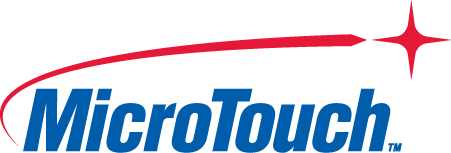Healthcare’s Evolution is Creating Opportunities for ISVs
How patients receive care will change over the next decade. Provide the solutions that make new processes practical and secure.
Healthcare is evolving. PwC’s Future of Health Study concludes that by 2035, healthcare will be “hyper-personalized, digitized and AI-enabled.” However, the study asks if healthcare systems are doing enough to adapt or whether they’re risking disruption.
Neeraj Methi, VP Services at BeyondID, says ISVs can meet this critical demand in the industry. “The evolution of healthcare delivery has opened up significant new opportunities for ISVs. As healthcare continues to decentralize, ISVs are developing innovative solutions to support these diverse delivery models. These solutions range from EHR systems designed for smaller clinics to telehealth platforms that facilitate remote consultations and in-home monitoring. This diversification offers more patient accessibility but also gives ISVs an opportunity to develop specialized software that meets these unique needs, Methi says.
The PwC paper includes an infographic of the solutions necessary to delivery care outside of the hospital. Healthcare organizations need solutions that connect their “command centers” to post-acute care, long-term care and home health and retail care facilities. Healthcare providers also need integration with the physician networks in their ecosystem, connections with virtual care platforms and with patient monitoring systems.
Design Solutions for the Future Healthcare Workforce
One hurdle that new solutions must help the healthcare industry overcome is the nursing shortage. Tyler Wells, ISV & Strategic Accounts Partner Manager, Americas, MicroTouch, cites research from the National Council of State Boards of Nursing, that found more than 600,000 intend to leave the profession by 2027.
“With care and patient experiences at risk, healthcare providers are looking at technology that saves time, creates more efficient workflows, and enhances employee experiences. Expect to see more touchscreen solutions in care settings that put information at practitioners’ and patients’ fingertips,” he says. “Touchscreens outside of patient rooms or at centralized nurses’ stations give nurses a comprehensive view of patient data, from vital signs and lab results to information on the patient, such as fall risk or dietary restrictions. This solution eliminates the need to carry a mobile device and enter patient rooms, saving minutes that can be devoted elsewhere.”
Wells adds, “Of course, touchscreen solutions for check-in, access to information and education, and making co-payments will continue to give patients self-service options and allow staff to focus on critical needs. Expect to see more technology deployed in healthcare settings in 2024, which perhaps counterintuitively, results in more face-to-face, personalized care because touchscreen solutions are managing simple, time-consuming tasks.”
More Technology Solutions Requires More Security
As healthcare providers deploy more technology to enable new care delivery and decrease the burden on staff, they’re facing a new challenge. Peter Hancock, VP, Global Channel Sales at Asimily, says, “More accessible healthcare, via in-home provider visits, pop-up clinics, and other care delivery beyond the traditional, can be great for patients, but tricky for healthcare providers’ IT teams. It’s an opportunity for healthcare ISVs and VARs to fill a much-needed security gap.”
He says, “The use of internet-connected healthcare devices (the IoMT) is accelerating, and bringing this equipment outside of a healthcare facility’s walls means that understanding each device’s security posture and risk vulnerability is that much more critical. Devices with insufficient security continue to be a treasure trove for attacks (healthcare data breaches now average $10M+ per incident). For healthcare providers already running on slim margins, breaches can be ruinous. ISVs and VARs can offer solutions that address device security amid an expansion in how healthcare is delivered.”
Methi says, “ISVs play a key role in solving these security challenges with the latest solutions like context- aware continuous authentication and authorization, phishing resistant password less access and digital identity verification using identity proofing.”
“But merely protecting patients in a more distributed environment is not enough. Healthcare organizations must also deliver a secure frictionless user experience. Advanced identity-first zero trust security solutions, combined with an engaging patient experience, provide the secure total experience that all healthcare providers hope to achieve,” Methi comments.
The Way Forward
To see where your healthcare organization clients should go requires a comprehensive assessment of where they are now. Work with them to identify gaps in their current processes and show them how your solution can streamline workflows. Also, help them define their vision for the future, showing them how technology can make more convenience, cost-effective care possible by implementing technology. Your role may also include educating them on technologies, including cloud services, 5G, and AI, that make expanding their IT environments to include new care delivery practical.
ISVs that develop solutions for staying ahead of the healthcare delivery curve will find ample opportunity to grow their businesses.
